Help “Daddy Balloon” grow a pepper beard! Fun status science experiment for kids.
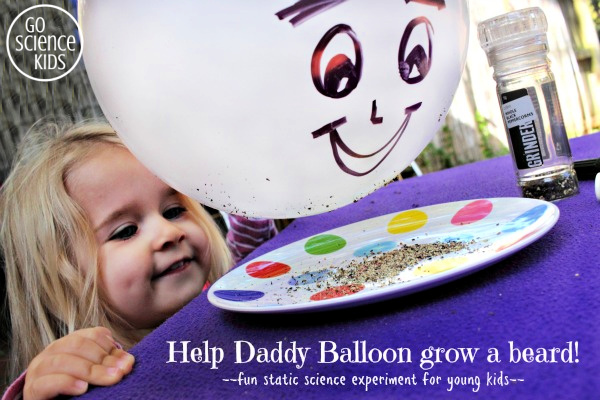
Static electricity is cool. It’s a safe and easy way to introduce science play for little kids, using just everyday materials that you already have at home. My daughter Bumble Bee and I had a lot of fun making our hair stand up straight a few weeks back, and I thought we could extend our static science play further by attempting to ‘pick up’ objects using static electricity alone.
And because Bumble Bee’s dad has a beard, we thought we could try to make the “Daddy Balloon” grow a pepper beard too!
Suitable for
Try this science activity with 1-2 year olds and 3-4 year olds. Bumble Bee was 2 years and 11 months old in these photos.

To help Daddy Balloon grow a stubbly beard, you will need:
- white balloon
- black permanent marker
- cracked black pepper
- plate
- your hair (or woollen fabric)
Rubbing a balloon against human hair is a fantastic way to create a static charge. If you’d rather not use hair, rubbing a balloon against woollen fabric works well too.
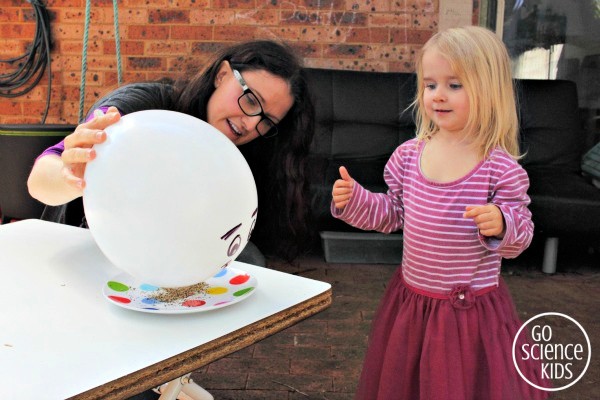
What to do
1. Blow up and tie off a balloon. Draw a man’s face with permanent marker.
If you draw the face on the bottom of the balloon, rather than on the side, it’s a little easier for kids to be able to attract the pepper stubble onto the right spot later on.
2. Add cracked pepper to a plate.
3. Hover the balloon slightly over the plate of cracked pepper.
Notice that nothing happens.
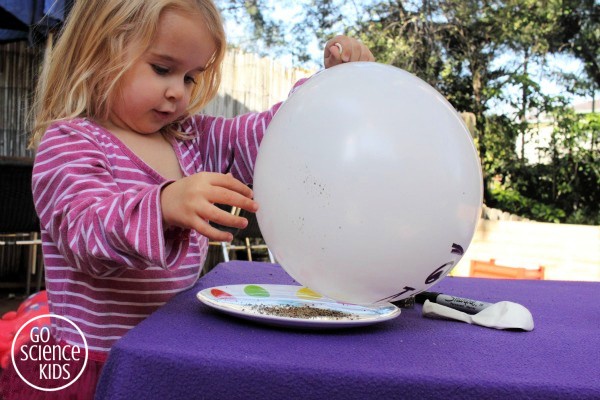
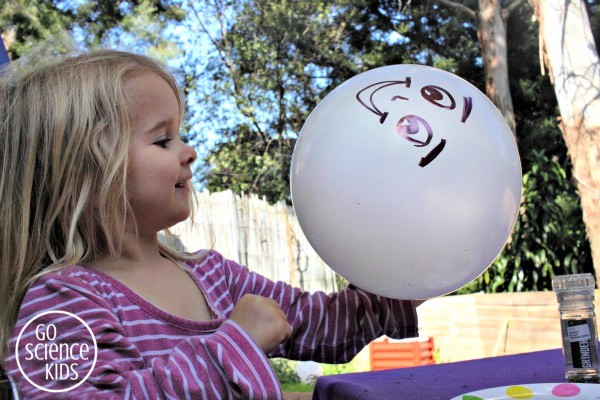
Ask your child if they think they can get the pepper to stick to the balloon without touching it.
4. Vigorously rub the ‘chin’ of your balloon man against your (or your child’s) hair to create a static charge, and then hover the balloon slightly over the plate of cracked pepper.
The pepper should leap up and stick to the balloon! You should also be able to hear the pepper make a fairly loud clicking sound from the static charge as well. Cool.
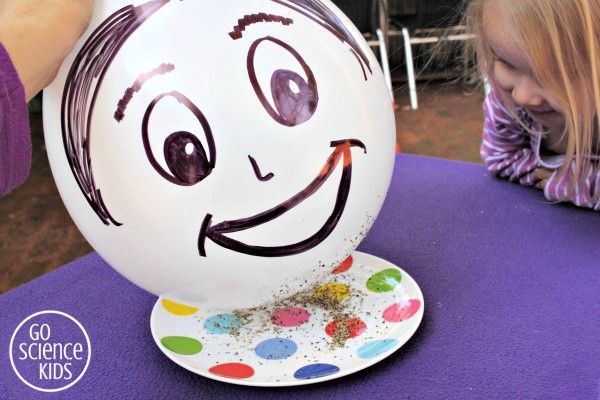
If you rubbed on the right spot, your balloon man should have grown a decent 5 o’clock shadow. But sometimes the pepper stubble is a bit patchy; I guess this happens in real life occasionally too. 🙂

To extend this science experiment, you could try rubbing the balloon against a different person’s hair or against some woollen fabric. Which one creates the best charge and attracts the most pepper?
See what else your charged balloon can attract. Do other spices work too?
Fun Science Fact
Firstly, a little background. Things are made of atoms, and inside atoms are protons (which are positively charged), electrons (which are negatively charged) and neutrons. Sometimes atoms can ‘lose’ or ‘gain’ an electron, resulting in a positive or negative charge. Things that have an opposite charge (ie are comparatively more positive or more negative than each other) will attract.
When a balloon rubs against hair, some of the electrons from the hair ‘jump’ onto the balloon. This makes the balloon more negatively charged (because of the ‘gained’ extra electrons) than the neutral pepper. When you then bring the balloon and pepper into close proximity with each other, the pepper becomes attracted to the balloon.
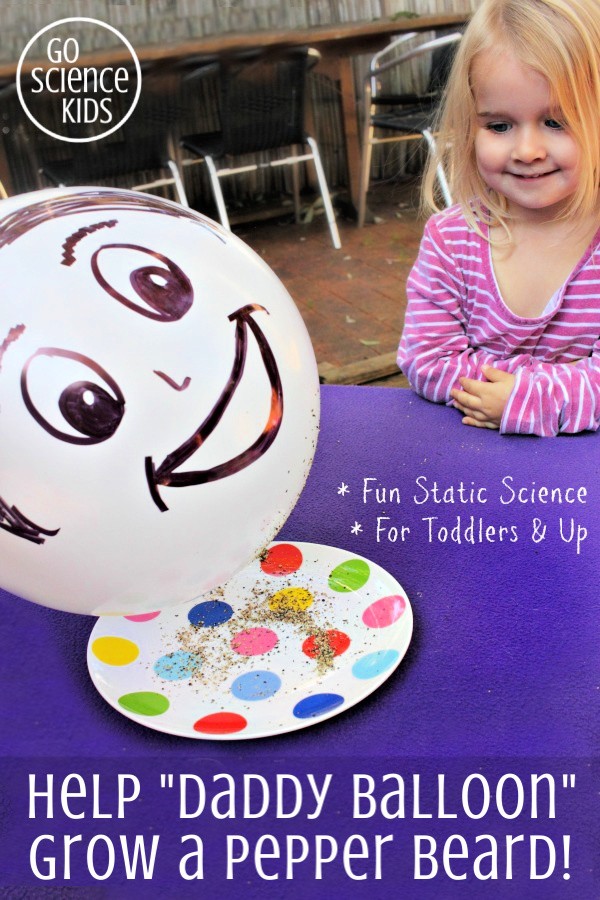
Please note…
This is generally a fun and safe activity for young kids. They can taste the pepper if they like – watch for their reaction! But please don’t let them put pepper in their eyes, and keep an eye out for any pieces of burst balloons (which can be a choking hazard). I also suggest keeping the permanent marker out of reach too. 🙂
All kids’ activities on this blog require attentive adult supervision. Parents and carers will need to judge whether a particular activity is appropriate their child’s age and skill level. Click here for more information.
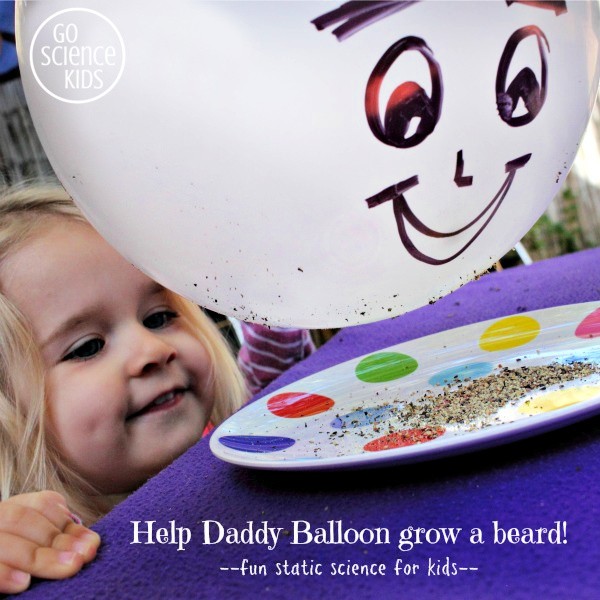


#